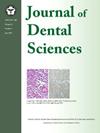揭示钛、氧化锆和聚醚醚酮种植体的特性及其表面改性
IF 3.1
3区 医学
Q1 DENTISTRY, ORAL SURGERY & MEDICINE
引用次数: 0
摘要
钛、氧化锆和聚醚醚酮(PEEK)是牙科种植学中研究最广泛的材料之一,每种材料都具有影响其临床性能的独特特性。本文系统地比较了它们的理化特性及其在体外和体内的行为。它还评估了各种表面改性技术,旨在提高骨整合和抗菌性能。钛被公认为黄金标准,以其卓越的机械强度和良好的骨整合而闻名,尽管它与种植体周围炎的高风险相关。氧化锆因其优异的美观性和与软组织的相容性而受到重视,是一种有前途的无金属替代品;然而,其脆性限制了其机械可靠性。PEEK是一种高性能聚合物,具有应力分布和生物相容性方面的优势,但需要大量的表面修饰来提高其骨整合能力。此外,本综述还深入研究了种植体周围炎的患病率、临床生存率以及衰老、骨质疏松和糖尿病等系统性疾病对种植体成功的影响。研究结果强调了材料特异性表面处理和定制修改的重要性,以确保牙种植体的长期成功。本文章由计算机程序翻译,如有差异,请以英文原文为准。
Unveiling the characteristics and surface modification of titanium, zirconia, and polyetheretherketone dental implants
Titanium, zirconia, and polyetheretherketone (PEEK) are among the most extensively studied materials in dental implantology, each offering unique properties that influence their clinical performance. This review systematically compared their physicochemical characteristics and their in vitro and in vivo behaviors. It also evaluated various surface modification techniques designed to enhance osseointegration and antibacterial properties. Titanium, recognized as the gold standard, is renowned for its exceptional mechanical strength and superior osseointegration, although it is associated with a higher risk of peri-implantitis. Zirconia, valued for its excellent aesthetics and compatibility with soft tissues, presents a promising metal-free alternative; however, its brittleness can limit its mechanical reliability. PEEK, a high-performance polymer, offers stress distribution and biocompatibility benefits, but it requires substantial surface modifications to improve its osseointegration capacities. Additionally, this review delved into the prevalence of peri-implantitis, clinical survival rates, and the impact of systemic conditions such as aging, osteoporosis, and diabetes on implant success. The findings underscored the critical importance of material-specific surface treatments and tailored modifications to ensure the long-term success of dental implants.
求助全文
通过发布文献求助,成功后即可免费获取论文全文。
去求助
来源期刊

Journal of Dental Sciences
医学-牙科与口腔外科
CiteScore
5.10
自引率
14.30%
发文量
348
审稿时长
6 days
期刊介绍:
he Journal of Dental Sciences (JDS), published quarterly, is the official and open access publication of the Association for Dental Sciences of the Republic of China (ADS-ROC). The precedent journal of the JDS is the Chinese Dental Journal (CDJ) which had already been covered by MEDLINE in 1988. As the CDJ continued to prove its importance in the region, the ADS-ROC decided to move to the international community by publishing an English journal. Hence, the birth of the JDS in 2006. The JDS is indexed in the SCI Expanded since 2008. It is also indexed in Scopus, and EMCare, ScienceDirect, SIIC Data Bases.
The topics covered by the JDS include all fields of basic and clinical dentistry. Some manuscripts focusing on the study of certain endemic diseases such as dental caries and periodontal diseases in particular regions of any country as well as oral pre-cancers, oral cancers, and oral submucous fibrosis related to betel nut chewing habit are also considered for publication. Besides, the JDS also publishes articles about the efficacy of a new treatment modality on oral verrucous hyperplasia or early oral squamous cell carcinoma.
 求助内容:
求助内容: 应助结果提醒方式:
应助结果提醒方式:


